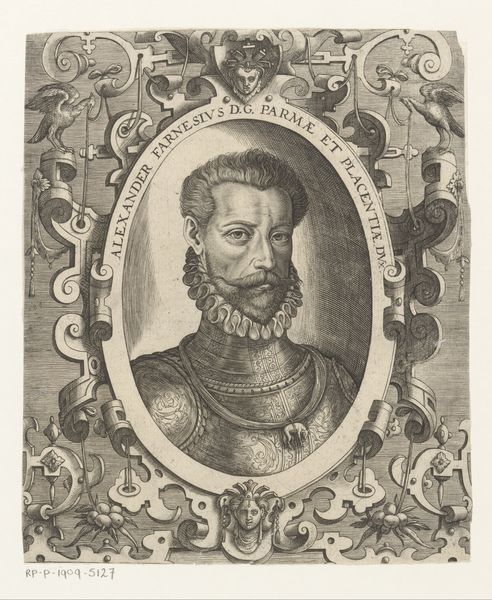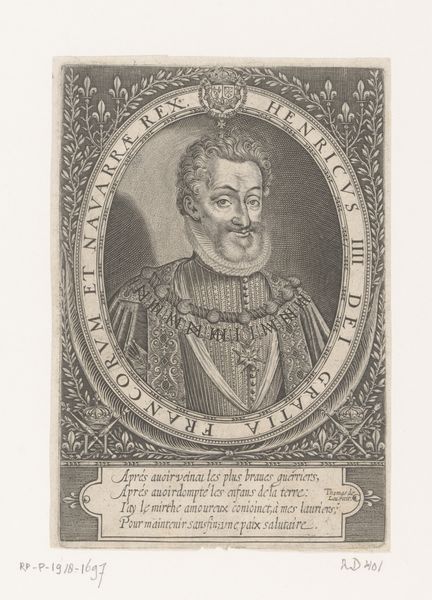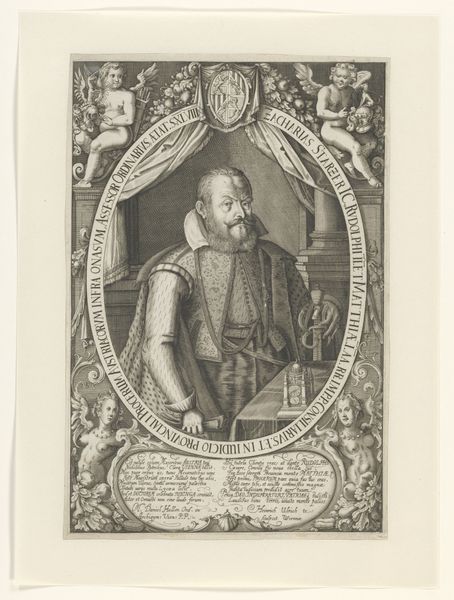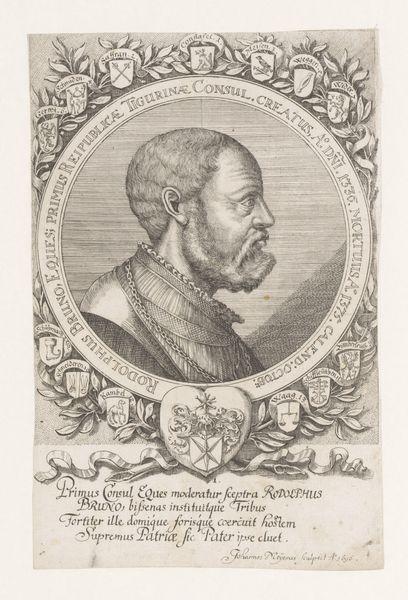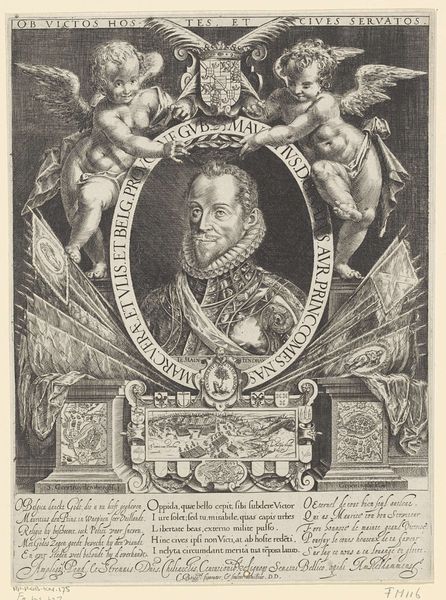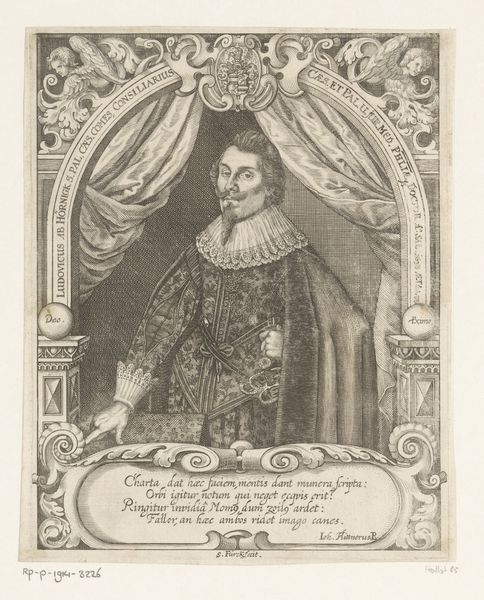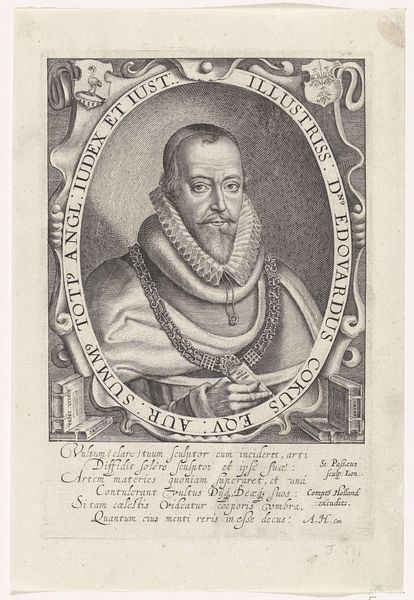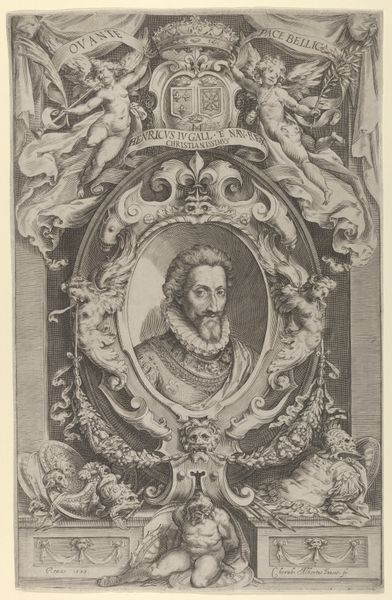
print, engraving
#
portrait
#
baroque
# print
#
history-painting
#
engraving
Dimensions: height 141 mm, width 87 mm
Copyright: Rijks Museum: Open Domain
Editor: We're looking at a portrait of Alexander Farnese, an engraving from 1692, by an anonymous artist. It’s interesting how formal it is, but there’s also an element of... propaganda, maybe? What do you see in this piece from a historical perspective? Curator: From my point of view, it's crucial to consider the role this kind of portrait played within the power structures of the time. It depicts Alexander Farnese, Duke of Parma, a significant figure in the Spanish Netherlands. This print, made after his death, wasn't just about remembering him; it was actively constructing a specific image for the public. Editor: An image that promotes the political agenda of someone? Curator: Precisely! Notice the opulent Baroque framing. What does that ornamentation evoke for you? Editor: A sense of authority and grandeur, maybe? Definitely not an average Joe! It projects power and legacy. I didn't really appreciate how the artistry here actively shapes and transmits a carefully crafted message. Curator: Exactly! The very act of producing and distributing such a print helped solidify his position in the collective memory and served as a potent symbol of authority, far beyond its aesthetic qualities. It invites us to critically question how power utilizes images to perpetuate itself. Editor: That’s given me a totally new understanding of this print. It's much more than just a picture; it is historical information shaped by cultural expectations. Curator: It really highlights how art becomes a player in political discourse and is essential to see works like this through that lens.
Comments
No comments
Be the first to comment and join the conversation on the ultimate creative platform.
